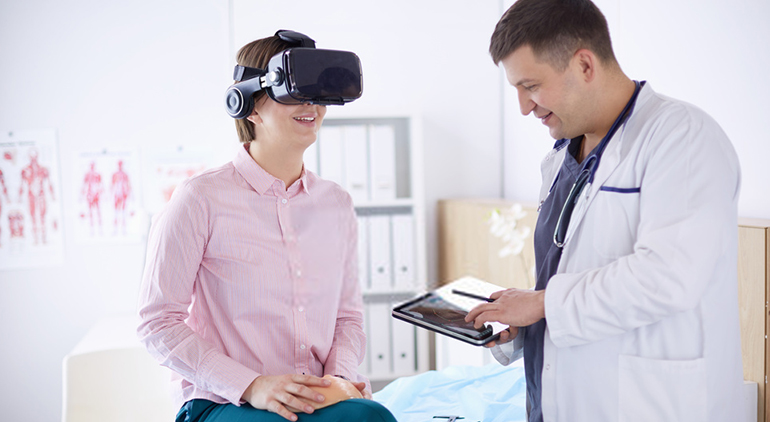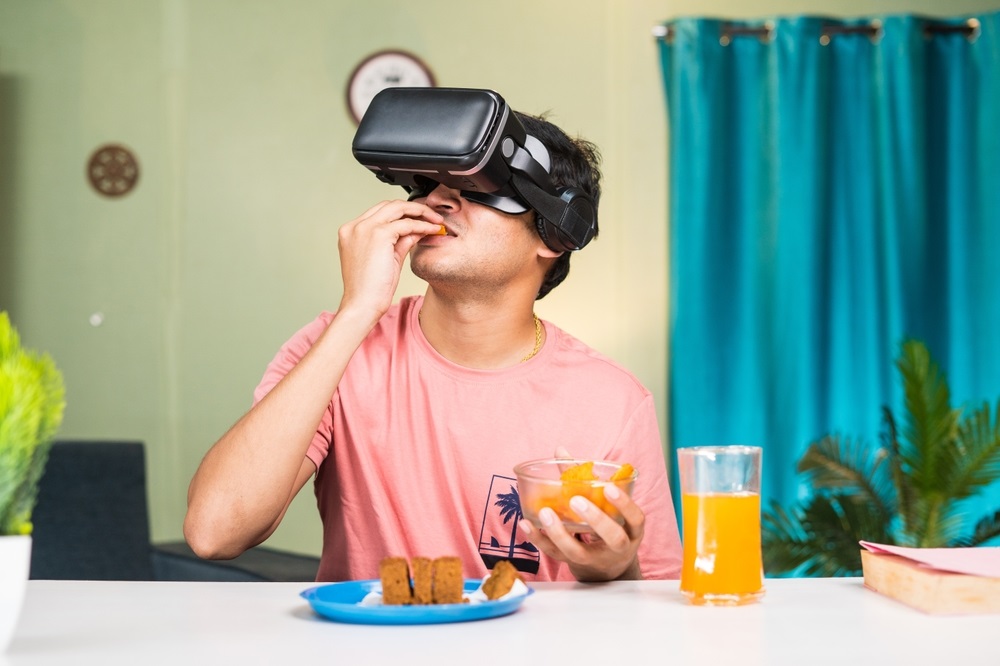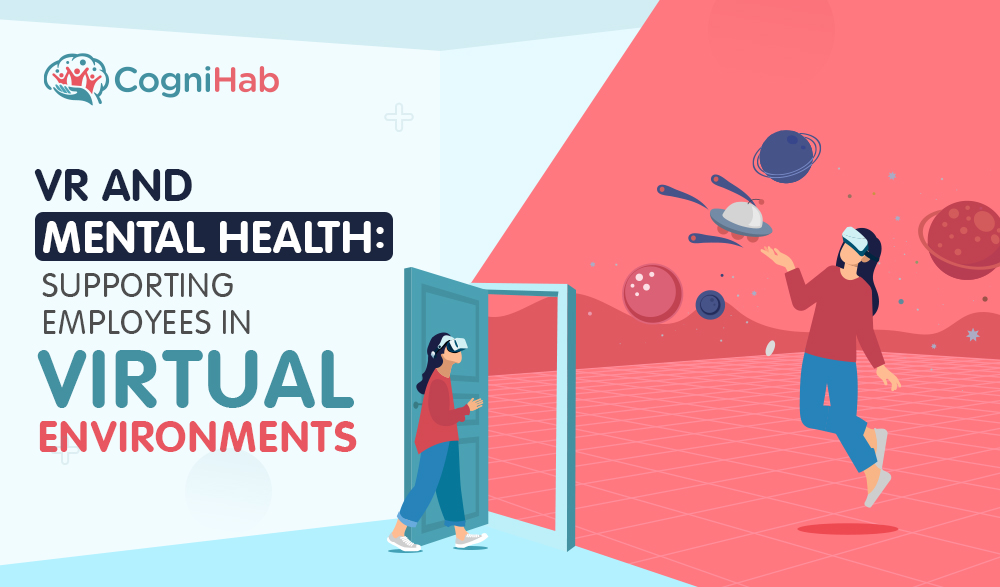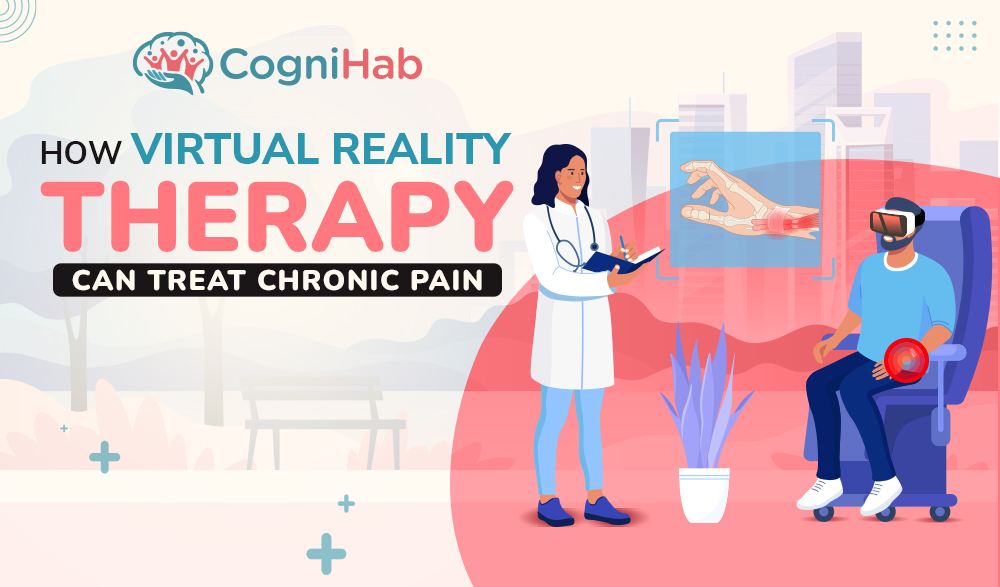Top 6 Incredible Virtual Reality Solutions for Healthcare
Despite being in its nascent stage, VR in healthcare has formed great solutions for a lot of healthcare companies. Since VR solutions for healthcare can have significant results as compared to the traditional methods, it is aiding doctors around the world in devising new strategies for the treatment of their patients.
VR due to its immersive nature acts as an important tool in the doctor’s kit for treating cancer, for the rehabilitation of the body, and also for developing social skills in neurological disorders.
1. VR for Vision Therapy
VR is known for treating various eye disorders like Amblyopia, Strabismus, vergence problem, depth perception. Vision therapy is a form of therapy that lets the patients train their eyes and perform regular eye exercises.
In VR Vision Therapy, there are interactive games to tackle all the mentioned problems. In these interactive games, a person is made to achieve a target and he gradually moves up the levels if he is performing well.
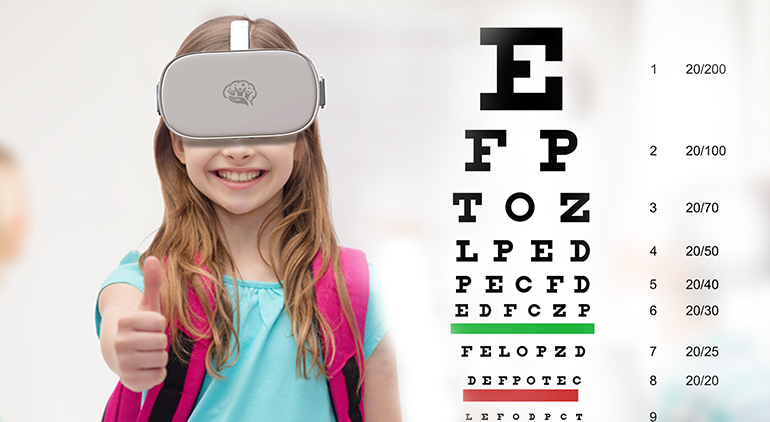
If he/she is not, he is made to achieve the same target with an unlimited number of tries and since the game is so immersive, the person hardly gives up on the game.
The result is an increase in the number of tries. One more application of VR is in diagnosing Glaucoma. Due to its portability, a person can take the exam from anywhere and the results can be checked online by their doctor remotely. Thus, solving the problem of discomfort for giving this exam.
Related post: 7 Reasons why VR Vision Therapy is effective
2. VR Stroke Rehabilitation
After a stroke, a person is required to do physical therapy to return to his former body functionalities.
VR stroke rehabilitation presents them with fun and engaging exercises that are aimed at rehabilitation and the person does them repeatedly so there is less chance of a relapse.
Inside VR, the person feels motivated and is enthusiastically performing his exercises. These exercises target the upper body, the lower body, the body balance, and the activities to be performed on a daily basis.
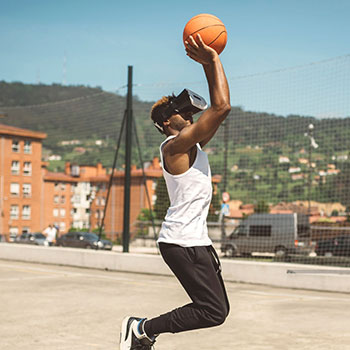
VR also provides relaxation journeys to help alleviate the pain so the person performs his exercises without emphasizing too much on the pain and focuses on his performance.
Related post: Games for Stroke Patients
3. VR spinal cord injury
Being in Virtual Reality is like being in a safe and controlled environment but also having a certain degree of freedom. Therefore the patients perform the regulated exercises without thinking that they might hurt themselves.
An example of a VR game for spinal cord injury patients is throwing and catching the ball. The environment created for the game is so real that the patient feels the exact emotions of being inside a sports stadium.
The aim of the game is pretty simple, to catch and throw the ball. This measures the patient’s strength helps in body balance and improves his hand-eye coordination.
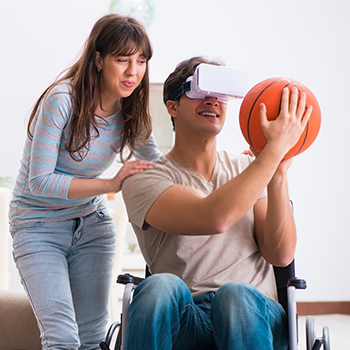
The game can be customized according to the patient’s needs. Like the ball can be a cricket ball or a tennis ball. The hands of the patient can be holding a cricket glove or a baseball glove. The stadium can accordingly be modified.
In catching the ball, the game level varies like the speed of the ball coming towards the patient increases and decreases, and the wind also plays a part in deviating the ball from its original trajectory.
In throwing the ball, the patient has to throw the ball with the required level of force and judge where the ball would land.
Related post: Rehabilitation after Spinal Cord Injury
4. Virtual reality cerebral palsy
Virtual reality presents games and exercises for children with cerebral palsy. These games and exercises are known to boost confidence, help in stretching and strengthening the body muscles, and also help in preventing the development of new problems.
One such game built-in VR is called Tennis in VR. The normal rules of tennis apply here. The patient just has to volley back the balls coming at him. He has the option to move around the court as well with the VR controller’s joystick.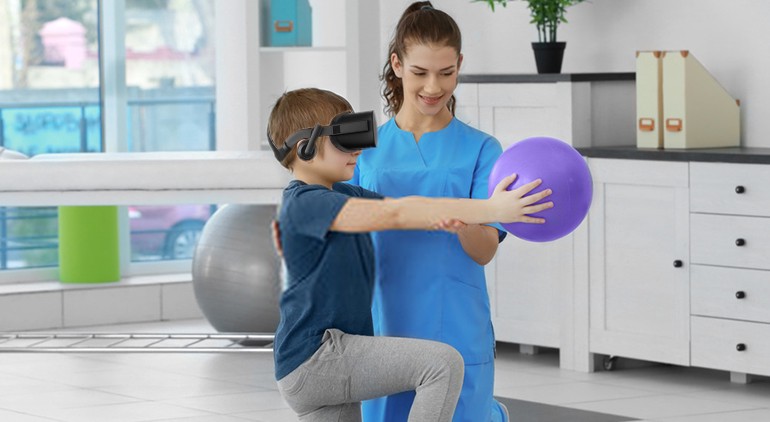 The aim is to score the given number of points by carefully moving his hands and volleying back in the projected spot. With increasing difficulty, the speed of the ball coming at the patient also increases, and also the position it is coming from is randomized.
The aim is to score the given number of points by carefully moving his hands and volleying back in the projected spot. With increasing difficulty, the speed of the ball coming at the patient also increases, and also the position it is coming from is randomized.
Another example of VR games for cerebral palsy is as below. In order to build focus amongst these children, they are made to perform an exercise called Move the object through the path.
The patient has to move the cut-out part of the object (can be a square, triangle, or a circle) and move it through the path (can be a square path, a triangular path, or a zig-zag path) without touching the boundaries of the path. This checks the child’s hand stability and correctness of his movements.
Related post: VR Stretching Games and Exercises for Children with Cerebral Palsy
5. VR for chemo patients
VR is known to educate and treat cancer patients and it also provides guidance to the doctors before going for surgery. The patients are made to view how the drugs would react to their bodies in VR.
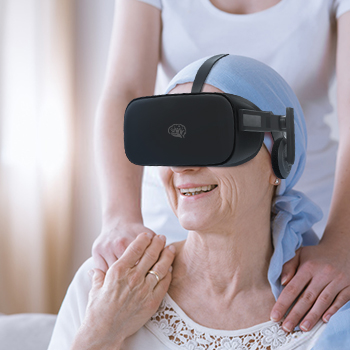
This helps them clearly understand what the prescribed drug is, how it enters different body parts internally, how it affects certain body parts and how these body parts react to that particular drug.
For the doctors, VR gives them the opportunity to see the affected body part in VR. They can see it in 3D, can change its position by rotating it by VR controllers, and prepare themselves ahead in time to carefully administer and perform the surgery.
For cancer rehabilitation, they can go through an immersive VR journey. These journeys are known to alleviate a person’s mood and provide them with feelings of calm and relaxation.
Related post: Immersive Distraction for Oncology
6. VR for Autism and Special Needs Children
VR through its variety of content (games, exercises, experiences, journeys) is able to guide autistic and special needs children to a normal lifestyle and is able to provide calm and serenity in their lives. In VR autism, the child is made to interact in VR experiences.
For example, an experience called a school hallway is made for them to adjust to their school hallway and maybe talk to a few friends along the way.
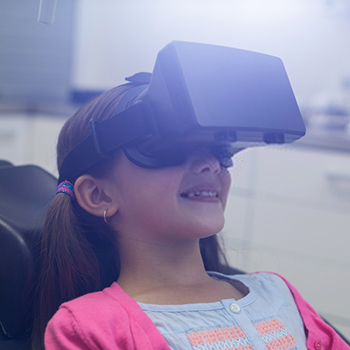
Another experience is of gestures. The children are made aware of the usual gestures made by other people and their reactions/responses are recorded and are seen remotely by their respective therapists.
Related post: How VR is Helping Patients with Autism
These therapists can later guide them basis on their understanding. More of these experiences include Street Crossing, Classroom Social Skills, and Police Encounter, etc.


